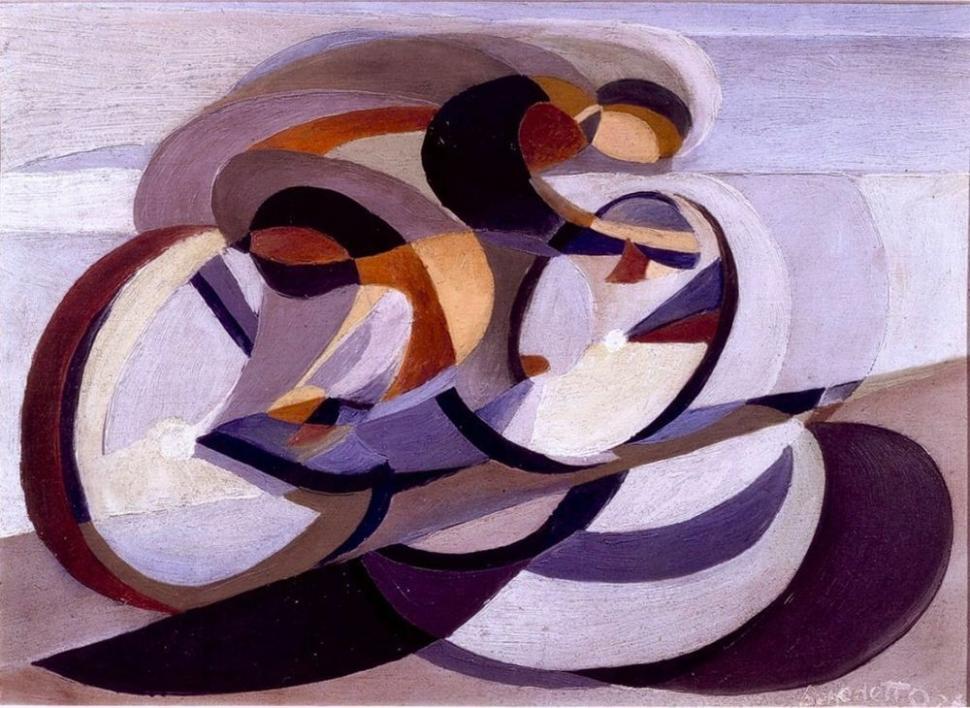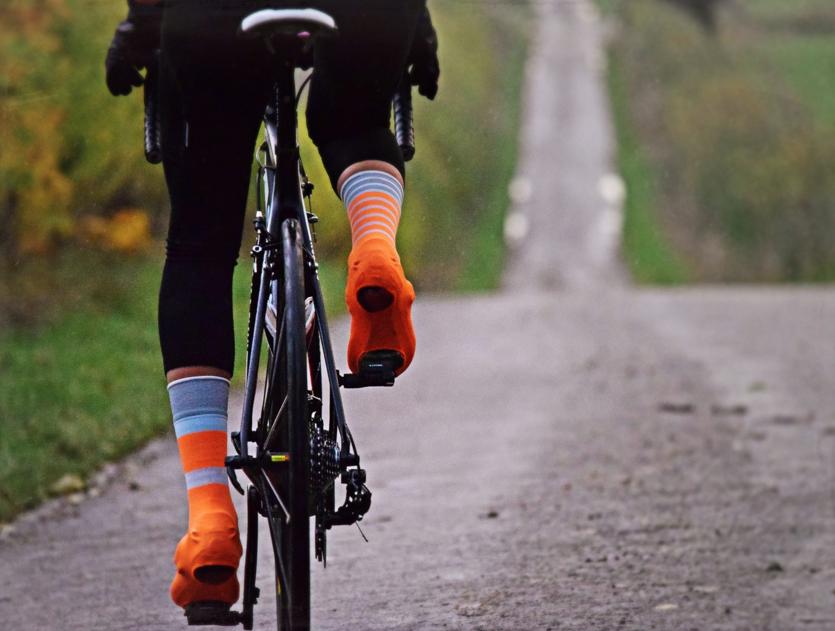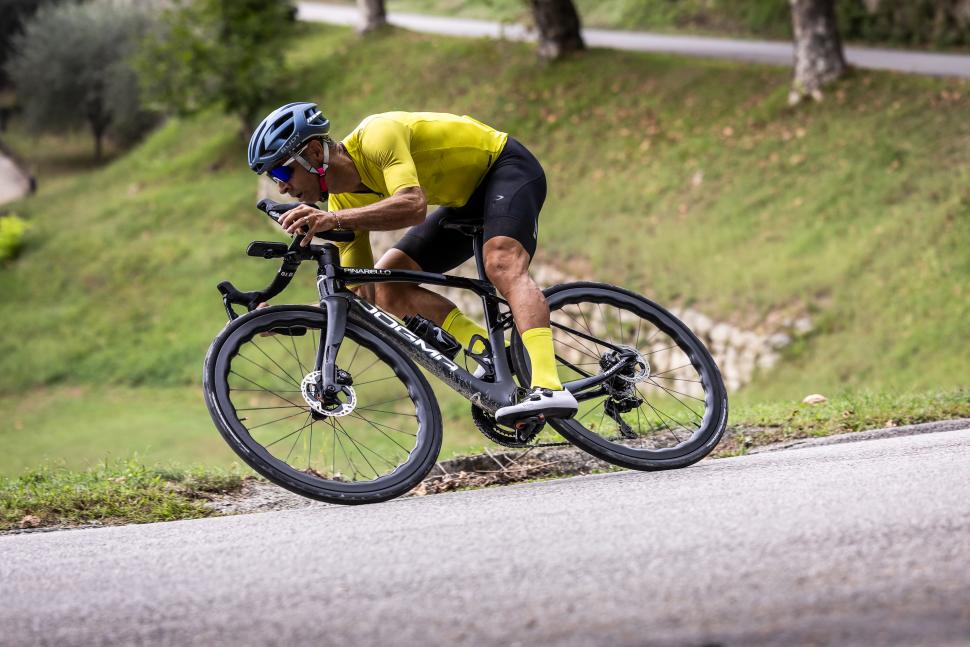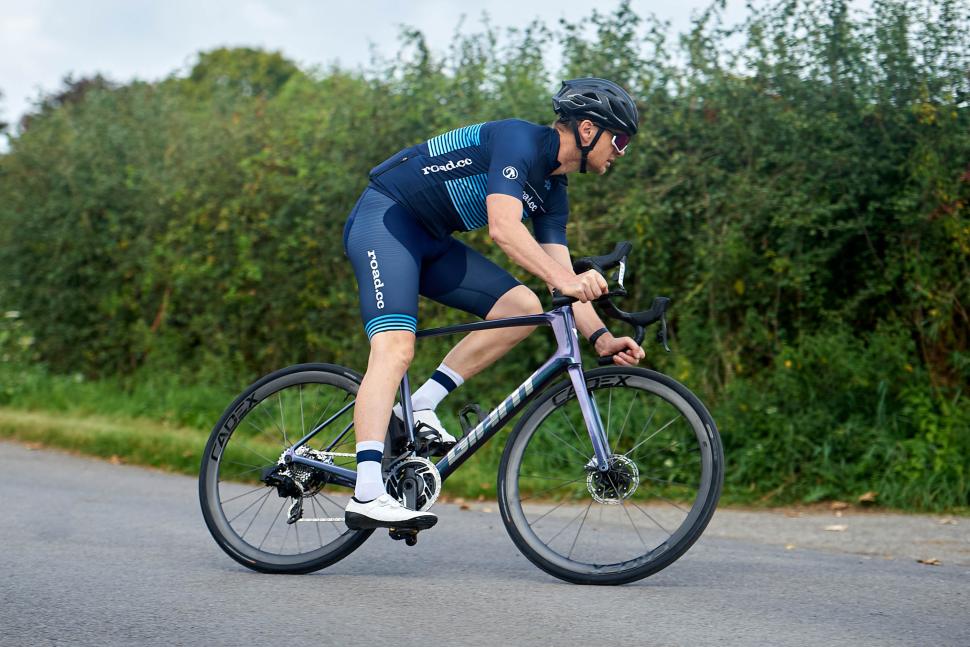- News
- Reviews
- Bikes
- Components
- Bar tape & grips
- Bottom brackets
- Brake & gear cables
- Brake & STI levers
- Brake pads & spares
- Brakes
- Cassettes & freewheels
- Chains
- Chainsets & chainrings
- Derailleurs - front
- Derailleurs - rear
- Forks
- Gear levers & shifters
- Groupsets
- Handlebars & extensions
- Headsets
- Hubs
- Inner tubes
- Pedals
- Quick releases & skewers
- Saddles
- Seatposts
- Stems
- Wheels
- Tyres
- Tubeless valves
- Accessories
- Accessories - misc
- Computer mounts
- Bags
- Bar ends
- Bike bags & cases
- Bottle cages
- Bottles
- Cameras
- Car racks
- Child seats
- Computers
- Glasses
- GPS units
- Helmets
- Lights - front
- Lights - rear
- Lights - sets
- Locks
- Mirrors
- Mudguards
- Racks
- Pumps & CO2 inflators
- Puncture kits
- Reflectives
- Smart watches
- Stands and racks
- Trailers
- Clothing
- Health, fitness and nutrition
- Tools and workshop
- Miscellaneous
- Buyers Guides
- Features
- Forum
- Recommends
- Podcast
OPINION
Sometimes, souplesse is more — why I long for the days when cycling was a beautiful pursuit, not a sport obsessed with watts and aero
 Cyclist - Enzo Benedetto
Cyclist - Enzo BenedettoThere is a word that seems to have completely vanished from the cycling lexicon, and it feels like it’s not just the word but the entire concept which has been lost to the weeds in the verge. That word is 'souplesse'.
It’s more than a word, though. It’s a concept, a value, an ideal... or at least it was. It seems to have been replaced by 'watts' and 'aero' and 'epic' as the most favoured words in cycling and the most desired qualities to attain, where everything is meant to be a battle and something to be suffered through to a rolling Matrix screen of tedious numbers and graphs.
Souplesse is none of these. It is the complete and diaphanous antithesis of watts and aero, because you can’t quantify it with charts, figures and results. Some would even call it an art. An eloquent and intoxicating art. A forgotten art.
Souplesse is something hard to describe, but easy to witness. It is… a smoothness, a fluidity, a level of effortless pedalling, even when there might be a lot of effort going in. Trying without trying, a certain elegance that you can’t quite put your finger on but you’ll know it as you can see it oozing out of a rider. It’s an aura, a symbiotic relationship with the bike that is the perfect dance across the tarmac. It is pedalling poetry, and you don’t gaze upon it much anymore because riding a bike with velvety style and buttery grace aren’t much in fashion because you can’t evaluate it via an app.
I remember souplesse being very important to cycling in my formative years when I was absorbing as much as I could from anywhere I could, which wasn’t anywhere much beyond one magazine per month, and a scattering of half-hour highlights in the middle of summer.
My cobwebby memory seems to group it together with 'ankling', and a deftly drawn sequence of pen and ink diagrams with how to do that efficiently, another aspect of cycling that has completely disappeared. The oft repeated description of the practice of ankling being something akin to “pretending you’re wiping a dog shit off the sole of your shoe” at the bottom of every pedal stroke, a thing of the past now it’s all in bags hanging like dog fruit off the bushes.
Souplesse, though, has stuck in there for my entire cycling life as something to strive towards at all times. If you can’t be good, then at least look as good as you can. This is why I worry too much about socks.
In my head, cycling is inherently an incredibly beautiful sport. It can’t not be. The bicycle at heart is a simple and elegant machine, despite some manufacturer’s best efforts, and riding it can be a wonderfully honest expression of energy and motion and self that needs to be celebrated and embraced, rider and machine in organic simpatico. It doesn’t need to be ugly, or made ugly. Nor does it need to be appraised by numbers.
Souplesse is both style and form, but it’s also a whole nebulous package of indiscernible more. There is a lack of unnecessary movement, an all-encompassing, satin-lined efficiency and a thick coating of olive oil smoothing the joints. It's the polar opposite of mashing the gears, yanking at the bars, head on the wonk, drool sliming off the chin and making it look like you’re putting a lot of gurning effort in to make a point. It is the knowing opposite of showing off because you don’t need to.
It’s not an attribute that’s linked to fitness or speed in any way, for while any pro will have a liquidity of motion that comes from the 10,000 hours, there’s always Chris Froome and his wrestling a drunk octopus style as the exception to the rule. Whilst in no way pretty it works for him (or it used to work for him anyway). Mathieu van der Poel, on the other hand, has it in absolute spades. His positioning and attitude on the bike is exemplary, and his socks are always on point, never runkled and spellbindingly less dirty than anyone else’s. This is a small yet incredibly significant signifier.
Eddy Merckx kind of had it in a very very brutal way, like a mason hammering the most exquisite detail out of a hulking lump of stone. Greg Lemond had lots. There’s a steepening corner on the way over the hill that every time I ride up it, I have an image of Lemond in my head perfectly executing an alpine hairpin from when I was watching it on the highlights with my teenage tea on my lap, a smooth pedal stroke with just the suggestion of an increase of power, a dropped heel, and an impeccable arc describing the flattest route around the switchback. I’ve been internalising that moment every single time on that bit of tarmac for the past 35 years or so.
Wedged in the same timeline in my head is an interview with Robert Millar, who was asked why he didn’t rock his upper body like others when climbing. He replied that it was wasted energy that would be best used in his legs, or words to that effect, and that’s the sort of thing souplesse is all about. The old guy on the bike that has done the 10,000 hours tenfold as he does 12mph all day every day on walnut-knurled legs at 12rpm without any complaint. He also has souplesse.
Souplesse does not, quite obviously, come naturally to some people. I often ride with a good friend who would be called behind his back in less charitable circles a 'nodder', in that there appears to be a set of tendons running parallel to his spine that connect his knees to his neck, and he bobs his head with every pedal stroke, like a pigeon. Riding alongside him can make me anxious. I’m not sure he will ever attain any level of souplesse, but others may have the chance to obtain some measure of its grace if they put the work in. The Italians have a word for it, 'sprezzatura', which is a casual nonchalance that hides the sheer amount of considerable and considered effort that has gone on behind the scenes to create that careless ambiance. Imagine the Italian male with perfectly tousled hair, not a strand out of place to look so suavely ruffled, dressed in a heavily curated collection of clothes that have had hours of deliberation behind them to look just thrown on last minute. You have to spend a lot of working hard to end up looking like you’re not working hard.
I had a friend Nick (names have been changed) who used to be obsessed with attaining a flat back on his road bike in the pursuit of souplesse. He was very much the style of the time, with a 140mm quill stem just kissing the headset top nut and the saddle set spirit-level flat and whacked all the way back, who rode into the back of a car whilst checking out his position and style in a mirrored building’s windows. You sometimes have to suffer for your art and I appreciate his sacrifice to the cause.
Meanwhile, I persisted my way through a whole winter once by practicing my seated climbing so it wasn’t a grinding, mashing mess. Legs doing the work, torso loosely rigid, arms al-dente, elbows just gazing the knee at the summit of each rotation. Think circles, sink into the saddle, pedal forward at the top of the stroke. Not as grunty as Ullrich, trying to channel my inner Induráin as best I could with femurs half the length and lungs a third the size. It may have been all kinds of biomechanical errors wrong, but it felt and looked good.
Souplesse can be a valuable artifice to focus on when things aren’t going so well. Instead of grovelling in a miasma of regret and snot up the last steep climb of the day, it is incredibly beneficial on many levels to calm down, look up from staring the anodising off your stem, divert the pounding in your skull and concentrate on motion, form and pedalling elegantly. It's faster, trust me. Imagine that you’re two minutes up on the pack with 9km to go, the camera motorbike is alongside broadcasting you to the world whilst your DS is screaming in your ear. That element of “I Think I Might Have This”. Is it just me on that motivational tool?
In a final attempt to pin down the ethereal essence of souplesse, it might help if we look elsewhere. Just as the word itself has no easy English definition, we'll have to take inspiration from other cultures again.
There is an essential element of Japanese archery in that hitting the target with accuracy is only a fraction of the sport. Presenting it with style and grace, from picking the arrow, fitting it to the drawstring and loosing it, are done with a distinct intention, elegance and ritual. This is known as 'Seisha Seichuu', which roughly translates as 'correct shooting is correct hitting'. That’s a conviction I can passionately and religiously apply to cycling: an approach and principle where style, attitude and a certain precision of doing things are just as important, if not more so, than power or success. It’s taking “If it looks right it probably is” to the absolutest level, and if you focus on correct technique then the end result will take care of itself.
Riding a bicycle is an easy thing to do. Any child can do it, but making it look good is a fine art, and riders that can do it should be applauded for their performance as much as those with good numbers, whether that’s on the world stage or the Sunday club run.
Cycling is a beautiful thing, so don’t pedal it ugly. Pull your socks up...
Jo Burt has spent the majority of his life riding bikes, drawing bikes and writing about bikes. When he's not scribbling pictures for the whole gamut of cycling media he writes words about them for road.cc and when he's not doing either of those he's pedaling. Then in whatever spare minutes there are in between he's agonizing over getting his socks, cycling cap and bar-tape to coordinate just so. And is quietly disappointed that yours don't He rides and races road bikes a bit, cyclo-cross bikes a lot and mountainbikes a fair bit too. Would rather be up a mountain.
More Opinion
Latest Comments
- mdavidford 4 hours 18 min ago
You don't like the Look of it then?
- chrisonabike 4 hours 29 min ago
TBF I think their complaint was with the design as proposed. There would be a cycle path with cyclists moving in two directions with little buffer...
- dh700 7 hours 50 min ago
I'd argue that nothing at all is wrong with the bans that you describe -- and they exist in some places....
- David9694 7 hours 59 min ago
In any rational world, there's no debate around this - drivers have not one fact that supports the notion that faster is in any way better for...
- slc 8 hours 12 min ago
You seem to be forgetting the first article in our great constitution. A citizen has the right to store motor vehicles immediately outside their...
- Jakrayan 9 hours 19 min ago
Yeah, the number of times I've had oncoming drivers overtake a stationary vehicle - parked car on their side for example - forcing me to hit the...
- bobbinogs 9 hours 36 min ago
I always think that the Pearson font is such a dreadful choice, it's almost impossible to read.
- David9694 13 hours 30 min ago
A bit of light rain is all it was on Friday ...





Add new comment
18 comments
great to see this elitist BS soldiering along...
Sidelining the point here a little bit, but I was just looking at a Rapha video about Lachlan Morton's latest incredible venture of riding 648km in 19 hours - breaking a previous record doing that, and also meeting a previous record owner Brian Fleck. I would say that in a certain manner such an effort is about the antithesis of souplesse - exactly about watts, epicness, aero etc. But then the video does it's best to tell a different story (as well) - about connecting with history, about the people supporting you, and does this in a visually beautiful manner, showing the beautiful landscape, showing kids cheering for the lone rider... What I am trying to point out is that while I feel that VecchioJo hits the mark on souplesse as one of the "physical" manifestations of beauty in cycling, there are other varieties of "the beautiful pursuit" as well at play, as the Rapha video illustrates - in the spirit. I don't have a term for it like souplesse - something like 'fun', but that does not cover it all. But more importantly, beauty in some manner can exist simultaneously with watts etc, at least to some extent. And the difference is perhaps indeed in what one ultimately focuses on. Will for example Lachlan himself look back at his ride and think "Man, I am so happy I rode and broke that record!" or "Man, I am so happy I rode and got to meet Brian Fleck!".... Just some thoughts.
Surely Pog has souplesse in spades?
I'd say Pog's riding is more about panache than souplesse.
I often wonder with my own cycling how much energy I could be wasting due to poor souplesse. Is the control of my leg muscles perfectly synced, or are the muscles on one side of the body fighting against the other side for a split second for each pedal stroke?
Wonderful read, thanks Jo! Took me right back to the eighties, in the best way 😄
I am 45yrs old and I only just got into cycling about 2 years ago when I moved to the UK.
Now I am reading articles like this and thinking this is so beautiful.
My former self is shaking its head at me right now.
Enjoy cycling! As Mark Twain wrote "Get a bicycle. You will not regret it, if you live".
I would like to see one race (as an experiment of sorts) where the tech is taken away. No power meter, no team radio, no gps. No HRM. Just speed and cadence taken from wheel and crank sensors, that is all.
The tech can remain on the bike, just not visable to the riders or the team car. Save it for post race analytics. Data can still be used for timing etc for the race organisers but data isn't available to anyone in tbe teams that can help influence the riders decision making.
I would like to see a race where riders have to use cunning and feel and gut instinct as to when to attack or what pace they can sustain. Leave the tech for training. When it's race time you're left to figure it out for yourself.
I dream of these days again.
The important difference between having all the data & understanding the value. My life goal (or at least one of them) is to be that old guy, cruising (seemingly) effortlessly & stylishly at 12mph, or 19.3 kmh.
This article is worthless without a picture of Frank Vandebroucke
And how dare you mention 'sprezzatura' without mentioning Mario Cipollini.
By my calculation to achieve 12mph at 12rpm this old chap would need to be running a 140/11 gear setup - souplesse indeed!
Or he's on an ebike.
Agreed. He has to turn his 2.175m (35mm tyres) wheel about 148 times in a minute, and he's performing 12 complete crank revolutions per minute, so he has to step up from his smallest cog (usually 11) by 12 1/3, so his chainring is about 136. Maybe his walnut-knurled legs are really long and he has reversed Vingegaard's trend with 200+ cranks? His hips may be souplesse-leisurely, but his feet must be really caning it!
Or he could be on a very high-wheeler...
(might need a bit of shimming though)
Bravo!
Entertaining read! I would also add that soupplesse is also a function of body mass. imagine an 80kg Contador 'dancing' up Mont ventoux!